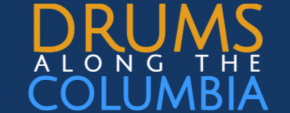The primary purpose of Drums Along The Columbia is to raise funds to support the participating local High School Instrumental music programs. This is a one evening event featuring several prominent Drum Corps from around the country.
Drums Along The Columbia started in 2006 after a 30-year absence of drum corps in the Tri-Cities. The band boosters and directors from Hanford, Kamiakin, Kennewick, and Pasco high schools along with community support came together to form the organization to bring drum corps back to our students and community.
All the entities listed above came together in a unified front to bring a component to music education that was missing in our community for 30 years. In 2009, Drums Along The Columbia proudly added the Southridge High School Band boosters and in 2015 the Columbians Drum Corps to the show committee board.
In 2020, the show operations moved under the Columbians Drum Corps.
This show is part of the Drum Corps International (DCI) Summer Music Games.
WHAT IS DRUM CORPS?
Many capable and articulate adults stammer when they try to define drum corps: “It’s ahh, well…it’s sort of like a marching band…but, ummm, only way better.” Some describe it as “marching band on steroids”; others say it’s like a professional marching band. One director even refers to it as “a cross between a Broadway musical and a marching band show.”
It’s true: drum corps does very much resemble marching band; there are, of course, certain key differences. But before we talk about what a drum corps isn’t, let’s talk about what it is.
Modern junior drum and bugle corps (“drum corps” for short) are independent youth organizations made up of up to 150 13- to 22-year olds who spend the summer rehearsing and performing an 11 minute show in which they play a variety of horns or percussion instruments, or spin flags, rifles, sabres, and other implements – all while marching a precise field show.
Now for the key differences: Unlike a marching band, there are no woodwinds (saxophones, clarinets, flutes, etc.) in drum corps, and many of the brass instruments are constructed slightly differently than those you’ll see on a local football field on Friday night in the fall. The intensity level is much higher in Drum Corps, as well as the difficulty level. Unlike marching band in the fall, which might require 2-3 rehearsals per week for a couple months, drum corps requires a much greater level of commitment. Immediately following their departure from school each spring, corps members spend 3 – 4 weeks rehearsing seven days per week for 12 to 14 hours per day. Then they hit the road for 6 – 8 weeks, tour all over the country, spend most nights sleeping on the bus (or a gym floor) as they travel to the next location, and compete 5-6 nights per week — all while still rehearsing 6 – 8 hours per day.
As you can see, the level of commitment is far greater than participating with a marching band. Another thing worth noting: before the summer even starts, there are several months of very rigorous auditions. There are often several hundred people auditioning for a maximum of 150 spots – and “making it” into the corps is a big accomplishment in itself.
Finally, drums corps – with few exceptions – are not affiliated with a school or university. They are independently run, self-sustaining organizations, and many are organized as 501(c)(3) non-profit organizations.
